
Jack Leon Ruby was an American nightclub owner who murdered Lee Harvey Oswald on November 24, 1963, two days after Oswald was accused of the assassination of President John F. Kennedy.
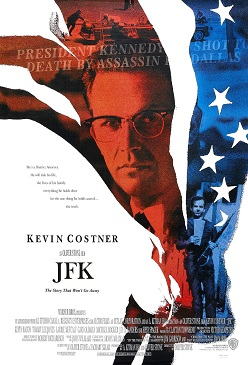
JFK is a 1991 American epic political thriller film written and directed by Oliver Stone. The film examines the investigation into the assassination of John F. Kennedy by New Orleans district attorney Jim Garrison, who came to believe there was a conspiracy to assassinate Kennedy and that Lee Harvey Oswald was a scapegoat.

The President's Commission on the Assassination of President Kennedy, known unofficially as the Warren Commission, was established by President Lyndon B. Johnson through Executive Order 11130 on November 29, 1963, to investigate the assassination of United States President John F. Kennedy that had taken place on November 22, 1963.
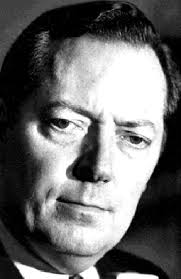
James Carothers Garrison was the District Attorney of Orleans Parish, Louisiana, from 1962 to 1973 and later a state appellate court judge. A member of the Democratic Party, he is best known for his investigations into the assassination of John F. Kennedy and the prosecution of New Orleans businessman Clay Shaw to that effect in 1969, which ended in Shaw's acquittal. He wrote three published books, one of which became a prime source for Oliver Stone's film JFK in 1991, in which Garrison was portrayed by actor Kevin Costner, while Garrison himself also made a cameo appearance as Earl Warren.

On November 22, 1963, John F. Kennedy, the 35th president of the United States, was assassinated while riding in a presidential motorcade through Dealey Plaza in Dallas, Texas. Kennedy was in the vehicle with his wife, Jacqueline, Texas Governor John Connally, and Connally's wife, Nellie, when he was fatally shot from the nearby Texas School Book Depository by former U.S. Marine Lee Harvey Oswald. The motorcade rushed to Parkland Memorial Hospital, where Kennedy was pronounced dead about 30 minutes after the shooting; Connally was also wounded in the attack but recovered. Vice President Lyndon B. Johnson was hastily sworn in as president two hours and eight minutes later aboard Air Force One at Dallas Love Field.

Everette Howard Hunt Jr. was an American intelligence officer and author. From 1949 to 1970, Hunt served as an officer in the Central Intelligence Agency (CIA), where he was a central figure in U.S. regime change in Latin America including the 1954 Guatemalan coup d'état and the 1961 Bay of Pigs Invasion in Cuba. Along with G. Gordon Liddy, Frank Sturgis, and others, Hunt was one of the Nixon administration's so-called White House Plumbers, a team of operatives charged with identifying government leaks to outside parties.
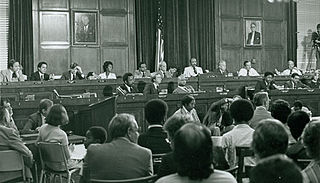
The United States House of Representatives Select Committee on Assassinations (HSCA) was established in 1976 to investigate the assassinations of John F. Kennedy and Martin Luther King Jr. in 1963 and 1968, respectively. The HSCA completed its investigation in 1978 and issued its final report the following year, which concluded that Kennedy was probably assassinated as a result of a conspiracy. In addition to now-discredited acoustic analysis of a police channel dictabelt recording, the HSCA also commissioned numerous other scientific studies of assassination-related evidence that corroborate the Warren Commission's findings.

The Texas School Book Depository, now known as the Dallas County Administration Building, is a seven-floor building facing Dealey Plaza in Dallas, Texas. The building was Lee Harvey Oswald's vantage point during the assassination of United States President John F. Kennedy on November 22, 1963. The Warren Commission concluded that Oswald, an employee at the depository, shot and mortally wounded President Kennedy from a sixth floor window on the building's southeastern corner. Kennedy died at Parkland Memorial Hospital.

Peter Dale Scott is a Canadian-born poet, academic, and former diplomat. A son of the Canadian poet and constitutional lawyer F. R. Scott and painter Marian Dale Scott, he is best known for his critiques of deep politics and American foreign policy since the era of the Vietnam War. Notably, he was a signatory in 1968 of the "Writers and Editors War Tax Protest" pledge, in which participants vowed to refuse tax payments in protest against the Vietnam War. Although trained as a political scientist, Scott holds an atypical academic appointment as a poet-scholar in an English department.

Robert J. Groden is an American author who has written extensively about conspiracy theories regarding the assassination of U.S. President John F. Kennedy. His books include The Killing of a President: The Complete Photographic Record of the JFK Assassination, the Conspiracy, and the Cover-up; The Search for Lee Harvey Oswald: A Comprehensive Photographic Record; and JFK: The Case for Conspiracy. Groden is a photo-optics technician who served as a photographic consultant for the House Select Committee on Assassinations.
James W. "Jim" Douglass is an American author, activist, and Christian theologian. He is a graduate of Santa Clara University. He and his wife, Shelley Douglass, founded the Ground Zero Center for Nonviolent Action in Poulsbo, Washington, and Mary’s House, a Catholic Worker house in Birmingham, Alabama. In 1997 the Douglasses received the Pacem in Terris Award.
The John F. Kennedy assassination and the subsequent conspiracy theories surrounding it have been discussed, referenced, or recreated in popular culture numerous times.
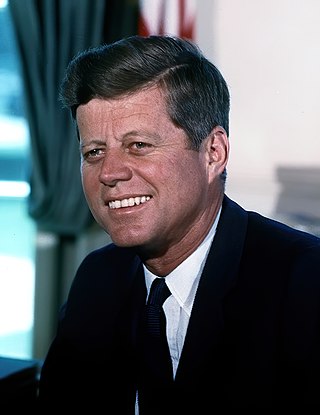
John F. Kennedy's tenure as the 35th president of the United States began with his inauguration on January 20, 1961, and ended with his assassination on November 22, 1963. Kennedy, a Democrat from Massachusetts, took office following his narrow victory over Republican incumbent vice president Richard Nixon in the 1960 presidential election. He was succeeded by Vice President Lyndon B. Johnson.

William Bruce Pitzer was an officer of the United States Navy whose death is speculated to have had some connection with the assassination of John F. Kennedy.
The CIA Kennedy assassination is a prominent John F. Kennedy assassination conspiracy theory. According to ABC News, the Central Intelligence Agency (CIA) is represented in nearly every theory that involves American conspirators. The secretive nature of the CIA, and the conjecture surrounding the high-profile political assassinations in the United States during the 1960s, has made the CIA a plausible suspect for some who believe in a conspiracy. Conspiracy theorists have ascribed various motives for CIA involvement in the assassination of President Kennedy, including Kennedy's firing of CIA director Allen Dulles, Kennedy's refusal to provide air support to the Bay of Pigs invasion, Kennedy's plan to cut the agency's budget by 20 percent, and the belief that the president was weak on communism.
Thomas C. Cornell was an American journalist and a peace activist against the Vietnam War and the Iraq War. He was an associate editor of the Catholic Worker and a deacon in the Catholic Church.

The assassination of President John F. Kennedy on November 22, 1963 has spawned numerous conspiracy theories. These theories allege the involvement of the CIA, the Mafia, Vice President Lyndon B. Johnson, Cuban Prime Minister Fidel Castro, the KGB, or some combination of these individuals and entities. Some conspiracy theories have alleged a coverup by parts of the federal government, such as the original FBI investigators, the Warren Commission, or the CIA. Former Los Angeles District Attorney Vincent Bugliosi estimated that a total of 42 groups, 82 assassins, and 214 people had been accused at one time or another in various conspiracy scenarios.
Lamar Waldron is an American writer and historian who often writes about conspiracies and cover-ups.
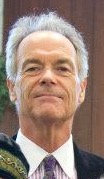
Peter Janney is an American writer, psychologist and lecturer based in Beverly, Massachusetts. He is best known for his book Mary's Mosaic: The CIA Conspiracy to Murder John F. Kennedy, Mary Pinchot Meyer, and Their Vision for World Peace, in which he makes a detailed case that ex-CIA wife and John F. Kennedy mistress Mary Pinchot Meyer was murdered by the CIA in order to cover up what she had discovered about the assassination of John F. Kennedy.
This bibliography of John F. Kennedy is a list of published works about John F. Kennedy, the 35th president of the United States.














